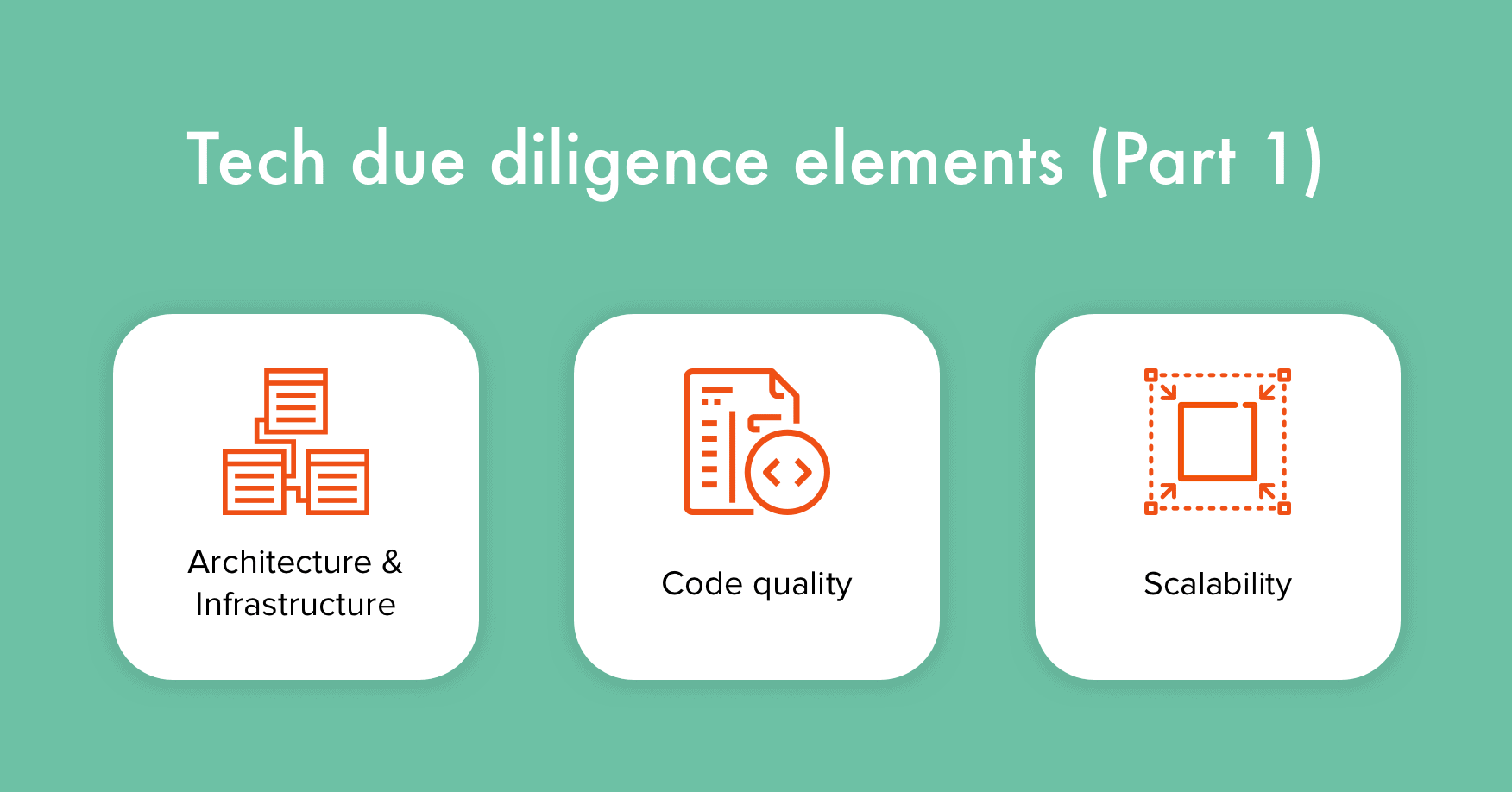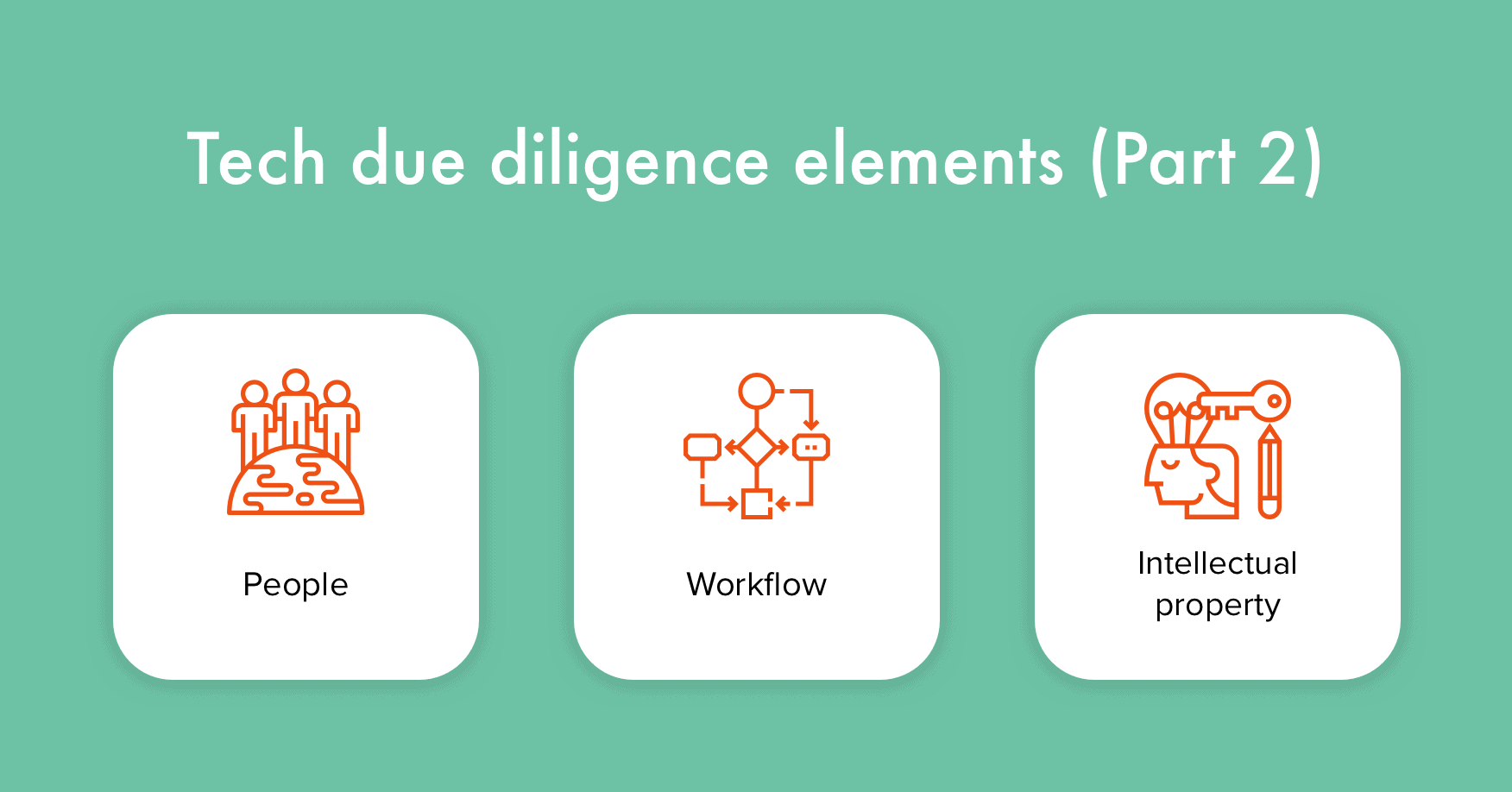While building startups, you may face a lot of obstacles and barriers. Technical due diligence is one of them. It lets you understand the quality of code, development processes, and conduct a risk assessment.

In this post, you’ll learn how startups handle Technical due diligence.
What is Technical Due Diligence?
Firstly, you have to understand what technical due diligence is. This expression means analyzing and reviewing the product’s tech aspects. It usually takes place before rounds of investments or merging of companies.
The main question during the tech due diligence are:
- The technical state of the product. What is the product’s stage? (planning, development phase, release)?
- Clarity of code. Are all coding guidelines met?
- Software scalability. How to scale startups and not to fail? How flexible is the product? How difficult will it be to expand?
- etc.
Technical due diligence provides some advantages bot for startups and investors:
- Allows to estimate the expenses for product upgrades
- Provides an understanding of the product’s condition
- Highlights risks for both company and investor
Technical Due Diligence Process: 6 Essential Steps to Take
The average technical due diligence process has six steps. However, depending on your needs, there may be more stages.
Preparation
You have to think in advance and start technical due diligence beforehand. The key to success is honesty between participants. Trustful relations between partners will be beneficial for cooperation.
Starting officially
This stage starts after all the wishes and details are discussed. Stakeholders set deadlines for preparing necessary documents.
Reviewing the documentation
The company should have technical documentation, like APIs documentation, architecture, and design documentation. Pass these docs to your partner before the meeting.
Arranging the live meeting
Personal meetings will help investors understand the inner processes of the startups. This kind of meeting may continue for a day or two and allows stakeholders to analyze the product personally.
Discussing all the issues
Stages listed above always bring some questions. These questions should be necessarily discussed with investors. Several personal meetings will shed light on questions about the tech part of your product.
Making a Report
Finally, the last stage requires you to prepare a report. As for the investors, they usually hire third-party specialists to complete due diligence. The report they get describes all possible risks, advantages, and expected profit.
Key Points of Technical Due Diligence for Startups
During preparation for technical due diligence, you have to outline the strengths of your product.
Technical due diligence in startups questions depend on your product’s stage. Here are the main investment stages:
- Seed funding. This stage requires you to release the product. The investors will see the first results, analyze them, and make a decision about the product’s potential.
- Series A. You have already developed a business model and revenue strategy for your product. Now, you need investments for further upgrades of your product.
- Series B. The same case as the previous one, except the fact that your company also focuses on clients’ demands and scaling-up.
- Series C and beyond. You already have a prospering product, and you’re searching for investments to create new ones.
The tech due diligence may vary depending on the investment stage. Nevertheless, there are six essential elements to consider.

Architecture and Infrastructure
Your company’s technology is the major thing during technical due diligence. You’ll have to describe your technology and provide documentation. Besides, you need to compare your product to the competitors, to ensure investors that you’re offering something unique.
When it comes to infrastructure, you have to explain the components of your product. Investors pay a lot of attention to programming languages, databases, and so on. These components play are important for eliminating security issues.
Architecture can be examined with the help of the ‘4+1’ model by Philippe Kruchten. This approach allows you to analyze the system from different angles. The ‘four’ means physical, logical, development, and process views. In its turn, ‘one’ stands for scenarios that show different use cases of the system.
Code and Data Quality
Another significant part of tech due diligence is code quality. A poorly-developed system can have a lot of bugs and malfunctions.
Investors are interested in well-written code because a badly built software leads to additional expenses.
Unit-testing may come at handy since it reveals possible pitfalls from the start. However, testing should be applied not only to the back end but also to the front end and database architecture.
Scalability
No doubt that investors care about the product’s scalability. Throughout the tech due diligence, it’s common to analyze how the system works and what growth potential it has.
To understand how scalable your product is, you have to answer an important question. Is my system ready for unplanned growth? If the answer is no, then it’s important to highlight the problems that may appear during the growth.
Also, don’t forget about security issues. Prepare all the documentation that concerns security tests. There are some automated tools that can gather such data and provide reports (Apigee, SoupAI).

People
Another point of interest for investors is the team of software developers. You have to provide information about your team members, their skills and responsibilities, and highlight team leads. If you hired the services of an outsourced development team, it’s better to introduce its members to investors.
Take care of organizational issues in advance. Create a database of your employees and their associated costs. Besides, highlight their skills and explain how they impact your project.
Workflow
Now, it’s time to overview inner processes. Issues like quality assurance, deployment process, product support, and security testing are the components of a successful software development process. Investors want to understand that these components are effective and cost-efficient.
Mind to document your inner processes. Document performance metrics and KPIs. Also, keep information about expenses, schedules, and team members.
Intellectual Property
The final stage is all about intellectual property. Issues with intellectual property can bring a lot of trouble to investors. That’s why you have to provide proof that intellectual property is completely protected.
To ensure protection, you have to keep an eye on open-source components of your product. Dependencies, licenses, and other third party elements can play a dirty trick with your project. So, attention to these details will prevent any legal issues.
Wrapping Up
As you can see, investors are paying a lot of attention to tech due diligence. If you’re not an expert in this field, it’s better to hire professionals. They will supply you with the required documentation. Besides, third party specialists can assess the code quality, architectural design, and more. With the help of different analytical tools, they will deliver results in the shortest terms.
About the guest author:
Vitaly Kuprenko is a technical writer at Cleveroad. It’s a web and mobile app development company in Ukraine. He enjoys telling about tech innovations and digital ways to boost businesses.

